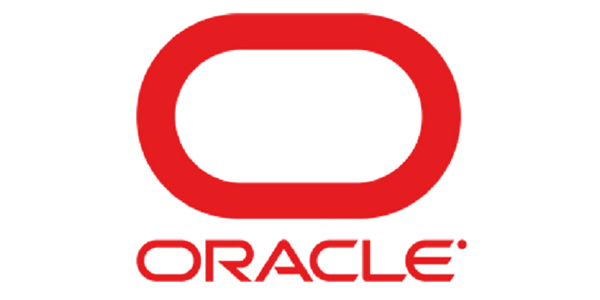Oracle Autorized Education Center
OBJECT-ORIENTED ANALYSIS AND DESIGN USING UML

| Durata | 5 Giorni |
|---|---|
| Ruolo | Developer, Sviluppatore |
| Tecnologie | Database, Networking, Sviluppo |
| Vendor | Oracle |
Edizioni del corso
€2,885.00
Richiedi Informazioni
Dettagli
OBIETTIVI
Descrivere l’object-oriented processo di sviluppo software, compresi metodologie object-oriented e flussi di lavoro
I requisiti del sistema tramite interviste con le parti interessate
Analizzare i requisiti di sistema per determinare i casi di utilizzo e modello di dominio del dominio del problema (il modello Requisiti)
Creare un’architettura di sistema (il modello di architettura) a supporto dei requisiti non funzionali (NFR) e dei vincoli di sviluppo
Creare un progetto di sistema (il modello di soluzione) a supporto dei requisiti funzionali (FRS)
CONTENUTI:
Examining Object-Oriented Concepts and Terminology
Describe the important object-oriented (OO) concepts
Describe the fundamental OO terminology
Introducing Modeling and the Software Development Process
Describe the Object-Oriented Software Development (OOSD) process
Describe how modeling supports the OOSD process
Describe the benefits of modeling software
Explain the purpose, activities, and artifacts of the following OOSD workflows (disciplines): Requirements Gathering, Requirements Analysis, Architecture, Design, Implementation, Testing & Deployment
Creating Use Case Diagrams
Justify the need for a Use Case diagram
Identify and describe the essential elements in a UML Use Case diagram
Develop a Use Case diagram for a software system based on the goals of the business owner
Develop elaborated Use Case diagrams based on the goals of all the stakeholders
Recognize and document use case dependencies using UML notation for extends, includes, and generalization
Describe how to manage the complexity of Use Case diagrams by creating UML packaged views
Creating Use Case Scenarios and Forms
Identify and document scenarios for a use case
Create a Use Case form describing a summary of the scenarios in the main and alternate flows
Describe how to reference included and extending use cases.
Identify and document non-functional requirements (NFRs), business rules, risks, and priorities for a use case
Identify the purpose of a Supplementary Specification Document
Creating Activity Diagrams
Identify the essential elements in an Activity diagram
Model a Use Case flow of events using an Activity diagram
Determining the Key Abstractions
Identify a set of candidate key abstractions
Identify the key abstractions using CRC analysis
Constructing the Problem Domain Model
Identify the essential elements in a UML Class diagram
Construct a Domain model using a Class diagram
Identify the essential elements in a UML Object diagram
Validate the Domain model with one or more Object diagrams
Transitioning from Analysis to Design using Interaction Diagrams
Explain the purpose and elements of the Design model
Identify the essential elements of a UML Communication diagram
Create a Communication diagram view of the Design model
Identify the essential elements of a UML Sequence diagram
Create a Sequence diagram view of the Design model
Modeling Object State Using State Machine Diagrams
Model object state
Describe the essential elements of a UML State Machine diagram
Applying Design Patterns to the Design Model
Define the essential elements of a software pattern
Describe the Composite pattern
Describe the Strategy pattern
Describe the Observer pattern
Describe the Abstract Factory pattern
Introducing Architectural Concepts and Diagrams
Distinguish between architecture and design
Describe tiers, layers, and systemic qualities
Describe the Architecture workflow
Describe the diagrams of the key architecture views
Select the Architecture type
Create the Architecture workflow artifacts
Introducing the Architectural Tiers
Describe the concepts of the Client and Presentation tiers
Describe the concepts of the Business tier
Describe the concepts of the Resource and Integration tiers
Describe the concepts of the Solution model
Refining the Class Design Model
Refine the attributes of the Domain model
Refine the relationships of the Domain model
Refine the methods of the Domain model
Declare the constructors of the Domain model
Annotate method behavior
Create components with interfaces
Overview of Software Development Processes
Explain the best practices for OOSD methodologies
Describe the features of several common methodologies
Choose a methodology that best suits your project
Develop an iteration plan
Overview of Frameworks
Define a framework
Describe the advantages and disadvantages of using frameworks
Identify several common frameworks
Understand the concept of creating your own business domain frameworks
Course Review
Review the key features of object orientation
Review the key UML diagrams
Review the Requirements Analysis (Analysis) and Design workflows
Developing Architectures for Enterprise Java Applications (SL-425)
EDU.Labs by Computer Gross
Via del Pino 1 - 50053 Empoli (FI) - Italia - P. I. 04801490485 - C.F. 02500250168
info@educationlabs.it | 0571 997787

